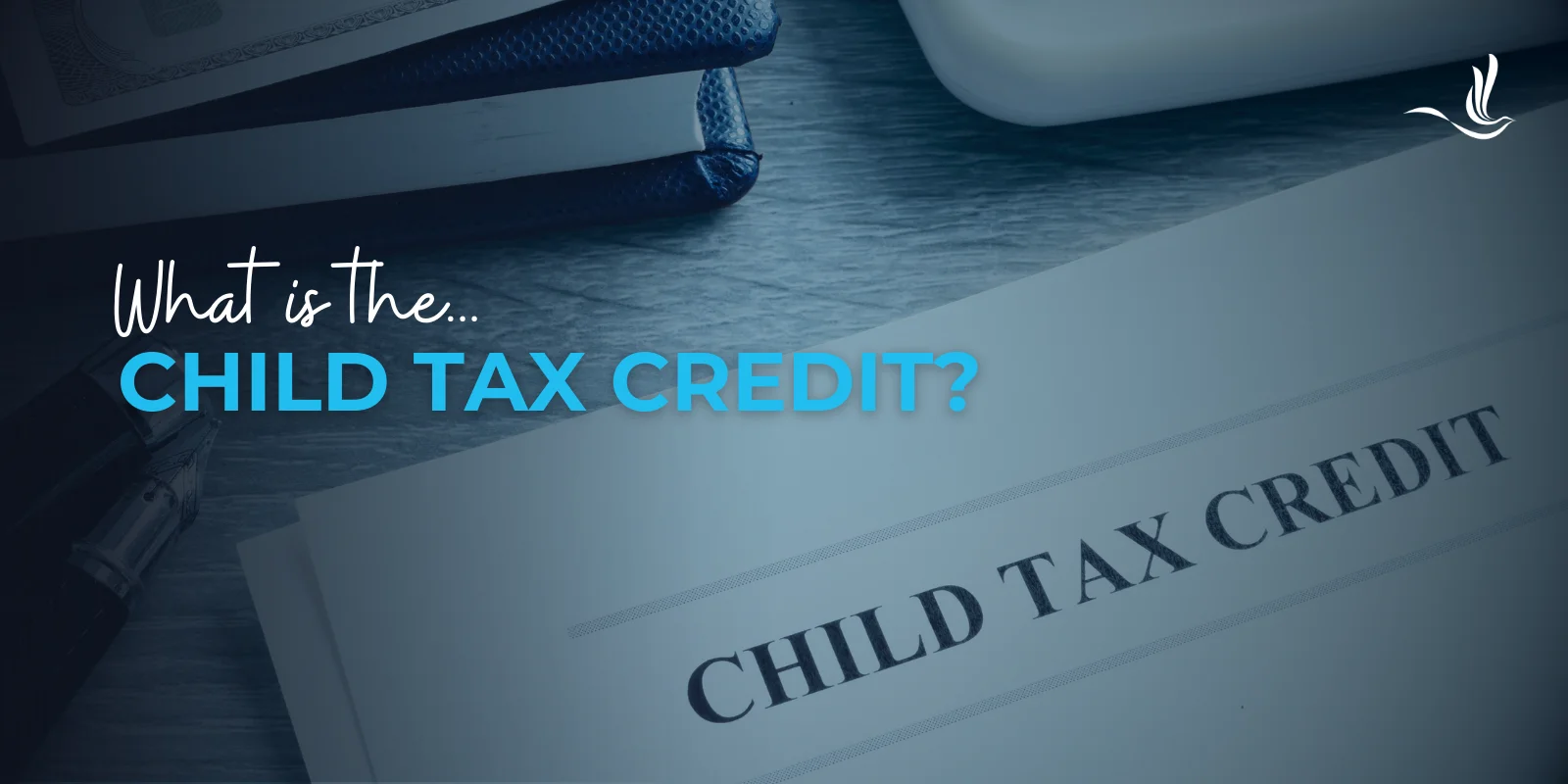Key Takeaways:
The Child Tax Credit (CTC) in 2025 is worth up to $2,220 per qualifying child under age 17.
A portion of the credit is refundable through the Additional Child Tax Credit (ACTC), up to $1,700 per child.
Eligibility depends on meeting IRS tests for age, relationship, residency, dependency, and Social Security number requirements.
The credit begins to phase out at $200,000 for single filers and $400,000 for married joint filers.
Families with low or no tax liability may still benefit through the refundable ACTC, which can provide a direct refund.
Taxpayers with dependents who don’t qualify for the CTC, such as older children or parents, may claim the Credit for Other Dependents (ODTC) worth $500.
The Child Tax Credit (CTC) is one of the most valuable tax benefits available to families with children. In 2025, eligible parents can claim up to $2,220 per child under age 17, with a portion of the credit being refundable. Understanding the Child Tax Credit can help families maximize their tax savings, potentially reduce their tax bill to zero, and even secure a tax refund through the Additional Child Tax Credit (ACTC). This article explains everything you need to know about the 2025 Child Tax Credit, including eligibility, calculation, claiming procedures, and special scenarios.
Who Can Claim the Child Tax Credit?
Eligibility is tied to both the parent and the child meeting IRS requirements. Understanding these requirements ensures that taxpayers claim the credit correctly and avoid errors that could delay refunds or trigger audits.
Basic Eligibility Requirements
To claim the Child Tax Credit, a taxpayer must meet several foundational requirements.
At Least One Qualifying Child: A taxpayer must have at least one child who meets the IRS’s definition of a qualifying child. This generally includes:
Biological children
Adopted children
Stepchildren
Foster children
Siblings
Descendants, such as grandchildren
For example, a single parent with two children living in the household full-time can claim the CTC for both children, provided they meet all other criteria.
Taxpayer and Spouse SSNs: Both the taxpayer and, if filing jointly, the spouse must have valid Social Security numbers. This ensures that the IRS can verify the identity of the filer(s) and prevent fraudulent claims. Importantly, only one spouse in a married joint return is required to have an SSN; however, both must meet other eligibility criteria such as filing status and income thresholds.
Cannot Be Claimed as a Dependent Elsewhere: The taxpayer claiming the credit cannot be listed as a dependent on another person’s tax return. For instance, a 19-year-old college student living at home who files independently cannot claim the Child Tax Credit for a younger sibling if another parent is already claiming the dependent children on their tax return.
SSN and Work Authorization Details
The Child Tax Credit requires that both the child and the parent have Social Security numbers valid for employment purposes. This is a key distinction that affects eligibility for noncitizens and certain other categories of taxpayers.
SSNs Must Be Eligible for Work: This prevents misuse of the credit and ensures that only individuals legally recognized by the IRS are eligible.
Eligible individuals include:
U.S. citizens: Automatically qualify if all other requirements are met.
Permanent residents (green card holders): Children and parents who are lawful permanent residents are eligible.
Refugees and asylees: Recognized under U.S. immigration law and eligible to work.
Temporary work-authorized noncitizens: Individuals authorized to work in the U.S. for a limited period are eligible if they have a valid SSN.
ITIN Filers Generally Ineligible: Taxpayers using an Individual Taxpayer Identification Number (ITIN) are generally not eligible for the Child Tax Credit. However, an exception exists if the spouse and child have valid SSNs. For example, a noncitizen parent filing with an ITIN may claim the credit if their U.S.-born child has an SSN and the other spouse on a joint return also has an SSN.
Exceptions
The IRS allows for limited exceptions to standard eligibility rules to accommodate unique circumstances that might otherwise prevent a qualified family from claiming the credit.
ITIN Issuance Delays: If a parent or child applies for an SSN but experiences delays in issuance, the IRS may allow the credit to be claimed once the SSN is issued, provided it occurs before the tax filing deadline. Documentation from the Social Security Administration may be required.
Non-Filing Parents Who Are Otherwise Eligible: Some parents who are not required to file a tax return (e.g., because income is below the filing threshold) may still claim the Child Tax Credit. This ensures that low-income families can access the refundable portion of the credit (ACTC), helping to reduce child poverty and provide financial support even when the family owes little or no federal income tax.
What Makes a “Qualifying Child”?
Only children meeting IRS criteria can generate the Child Tax Credit. The IRS defines a “qualifying child” through several tests, including age, relationship, residency, and citizenship. Meeting all these criteria ensures that the child is eligible for the full credit and helps parents avoid IRS errors or delays.
Age Test
To qualify for the 2025 Child Tax Credit, a child must be under 17 at the end of the tax year. This means a child who turns 17 on December 31, 2025, is not eligible for the credit for that year. Newly born or adopted children count for the year they join the household, even if that occurs late in the year, as long as they meet all other requirements.
Relationship Test
A qualifying child must have a specific relationship to the taxpayer. Eligible children include:
Foster children placed by an authorized agency
Siblings (including step-siblings and half-siblings)
Descendants of any of the above (grandchildren, nieces, nephews)
Example: A taxpayer can claim the CTC for a foster child placed in their home in June 2025, as long as the child lived with them for the required portion of the year and meets the other eligibility rules.
Dependency Test
The child must be claimed as a dependent on the taxpayer’s 2025 tax return. Simply being eligible to claim the child is not enough; the child must actually appear as a dependent.
For divorced or separated parents, the custodial parent (the parent with whom the child lives for the majority of nights during the year) generally claims the CTC. However, under certain circumstances, a non-custodial parent may claim the credit if they obtain Form 8332 or a similar statement signed by the custodial parent.
For example, if parents share custody equally, but the mother has a higher adjusted gross income (AGI), the IRS tie-breaker rules may allow the mother to claim the CTC.
Financial Support Test
A child cannot provide more than half of their own financial support during the year. This includes money from part-time jobs or investments, but government assistance for support, like TANF or foster care payments, does not count as support from the child.
Residency Test
The child must live with the taxpayer for more than half the year. Temporary absences for school, vacation, or medical care count as time lived at home. Special rules apply for:
Newly born or newly adopted children
Children who were kidnapped by a non-family member
Divorced or separated parents sharing custody
For instance, a child attending a boarding school but living with a parent during all breaks and vacations still meets the residency requirement.
Joint Return Test
Children who are married generally cannot file a joint return if they want to qualify for the CTC. An exception exists if the joint return is filed only to claim a refund of withheld taxes or estimated payments, without affecting other tax liabilities. For example, a married child who filed jointly solely to claim a small refund of withheld wages can still be considered a qualifying child for the CTC.
Citizenship and SSN Requirement
To qualify, a child must be a U.S. citizen, U.S. national, or U.S. resident. In addition, the child must have a Social Security number eligible for work.
How Much is the Child Tax Credit in 2025?
The amount of the Child Tax Credit depends on both the number of qualifying children and the taxpayer’s income level. Understanding the base credit, income limits, and phase-out calculations ensures families claim the maximum benefit available.
Base Credit Amount
In 2025, each qualifying child under age 17 allows the taxpayer to claim a Child Tax Credit of $2,220. This is the standard amount before considering income limitations or refundable portions. For example, a parent with three children under 17 could claim a total base credit of $6,660 ($2,220 x 3 children), assuming all children meet qualifying criteria and the taxpayer’s income is below phase-out thresholds.
Income Phase-Out
The Child Tax Credit begins to phase out at higher incomes. For 2025:
Single filers: Phase-out starts at $200,000 of modified adjusted gross income (MAGI).
Married joint filers: Phase-out starts at $400,000 of MAGI.
The reduction is calculated as $50 for every $1,000 of income over the threshold, rounded up to the nearest $1,000.
For instance, let’s say a married couple filing jointly with two qualifying children has a MAGI of $420,500. Their phase-out calculation would be:
MAGI over threshold: $420,500 – $400,000 = $20,500
Rounded up to nearest $1,000: $21,000
Reduction: $50 x 21 = $1,050
They would subtract $1,050 from their total potential credit ($2,220 x 2 = $4,440), resulting in a final credit of $3,390 before considering the refundable portion. Phase-outs ensure that higher-income taxpayers do not receive the full credit, focusing the benefit on families with children who are more likely to need financial support.
The Additional Child Tax Credit (Refundable Portion)
The refundable portion of the Child Tax Credit, known as the Additional Child Tax Credit (ACTC), ensures that families can benefit from the credit even if their tax liability is minimal or zero. This feature helps low- and moderate-income households receive much-needed financial support beyond simply offsetting taxes owed.
Refundable Amount
In 2025, the maximum refundable portion per qualifying child is $1,700. This means that families who do not owe enough in federal income taxes to fully utilize the $2,220 base credit may still receive up to $1,700 per child as a refund.
Let’s look at an example. A single parent with two children under 17 owes $1,500 in federal taxes. The total base credit would be $4,440 ($2,220 x 2). After offsetting their $1,500 liability, the remaining $2,940 could be partially refundable through the ACTC. In this case, the IRS would allow up to $3,400 ($1,700 x 2) as a refund, but the actual refund is limited to the remaining $2,940 of unused credit.
Earned Income Requirement
To qualify for the ACTC, taxpayers must have earned income above a minimum threshold of $2,500 in 2025. Earned income includes wages, salaries, tips, and self-employment income, but it excludes most unearned income such as investment gains or certain Social Security benefits.
Calculation Rules
The refundable portion of the credit is calculated as 15% of earned income above $2,500 per taxpayer, adjusted for the number of qualifying children. Here’s a step-by-step example:
Parent’s earned income: $15,000
Minimum threshold: $2,500
Income above threshold: $15,000 – $2,500 = $12,500
Refundable portion: 15% x $12,500 = $1,875
If the parent has two children, the refundable portion is capped at $1,700 per child. Therefore, the actual refundable credit would be $3,400 (2 x $1,700), not $1,875, because the per-child cap applies.
Restrictions
Certain filing situations restrict eligibility for the refundable portion. Notably:
Taxpayers filing Form 2555 to claim foreign earned income exclusions cannot claim the ACTC.
Refundable credits are generally unavailable to taxpayers with no earned income above the $2,500 threshold.
Income limits and phase-outs for the base credit indirectly affect the ACTC because the refundable portion cannot exceed the remaining unused credit after offsetting tax liability.
Special Situations
Certain family circumstances can impact eligibility for the Child Tax Credit, who claims the credit, and how much can be received.
Multiple Eligible Claimants
When a child is eligible to be claimed by more than one taxpayer, the IRS has tie-breaker rules to determine who can claim the credit. Generally, the parent with whom the child lived the longest during the tax year is allowed to claim the credit. If the child lived with both parents an equal amount of time, the parent with the higher adjusted gross income (AGI) is eligible. These rules also apply to other relatives, such as grandparents, who may have custody or guardianship.
Deceased Child Before SSN Issuance
In rare cases, a child may pass away before receiving a Social Security number. The IRS allows a parent to claim the Child Tax Credit if they can provide documentation proving the child’s existence and relationship. Typically, this includes a birth certificate, death certificate, and any other official records showing eligibility. Filing with this documentation ensures the credit is not denied due to the absence of an SSN at the time of death.
The Credit for Other Dependents (ODTC)
Dependents who do not qualify for the Child Tax Credit may still generate tax benefits through the Credit for Other Dependents. This nonrefundable credit provides financial recognition for supporting older children, students, or other relatives.
Amount and Eligibility
The ODTC allows taxpayers to claim a $500 credit per qualifying dependent in 2025. Eligible dependents include:
Full-time students ages 19–23
Other dependents, such as elderly parents or disabled relatives
For example, a parent supporting a 20-year-old college student may claim a $500 credit even though the child is too old for the standard Child Tax Credit. This ensures that families receive some tax relief for dependents beyond the typical CTC age limits.
Phase-Out Rules and Filing
The ODTC follows the same modified adjusted gross income (MAGI) phase-out thresholds as the Child Tax Credit: $200,000 for single filers and $400,000 for married filing jointly. Taxpayers calculate the credit using Schedule 8812, which accounts for the number of eligible dependents and any applicable phase-out. The nonrefundable nature of the ODTC means it can reduce tax liability but cannot generate a refund beyond what is owed.
Frequently Asked Questions
Why am I not getting the full Child Tax Credit?
You may not receive the full Child Tax Credit if your income exceeds the phase-out limits, your child does not meet IRS eligibility rules, or you owe little to no taxes and cannot claim the full nonrefundable portion.
How much do you get per child on taxes in 2025?
In 2025, the Child Tax Credit provides up to $2,220 per qualifying child under age 17, with up to $1,700 refundable through the Additional Child Tax Credit.
Can a father claim a child on taxes if the child does not live with him?
Generally, only the custodial parent can claim the Child Tax Credit. However, a noncustodial father may claim the child if the custodial parent signs Form 8332 releasing the credit.
What are common dependent claim mistakes?
Frequent mistakes include claiming a child who does not meet IRS residency or age rules, failing to provide a valid Social Security number, or having multiple taxpayers attempt to claim the same child.
What happens if two parents claim the same child?
If two parents claim the same child, the IRS applies tie-breaker rules based on where the child lived most of the year and which parent has the higher adjusted gross income (AGI). This can delay refunds until the conflict is resolved.
Can the IRS tell me who claimed my child?
No, the IRS does not disclose who claimed your child. Instead, they notify both parties of the conflict and request documentation to determine the rightful claimant.
How do I prove I’m the custodial parent?
You can prove custodial status with records showing the child lived with you most of the year, such as school records, medical records, or official documents listing your address as the child’s primary residence.
Tax Help for Families in 2025
Maximizing the 2025 Child Tax Credit requires understanding who qualifies, how the credit is calculated, and how to claim it correctly. By carefully reviewing eligibility rules, including age, relationship, residency, and Social Security requirements, families can ensure they receive the full benefit for each qualifying child. Combined with the refundable Additional Child Tax Credit and the Credit for Other Dependents, the CTC offers meaningful financial relief, helping to reduce everyday expenses and significantly lower child poverty. Because the rules can be complex and situations vary, consulting a tax professional can help ensure you claim the maximum credit you’re entitled to and avoid costly mistakes. Optima Tax Relief is the nation’s leading tax resolution firm with over a decade of experience helping taxpayers.
If You Need Tax Help, Contact Us Today for a Free Consultation


























